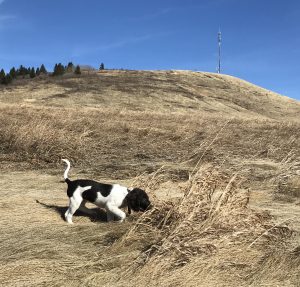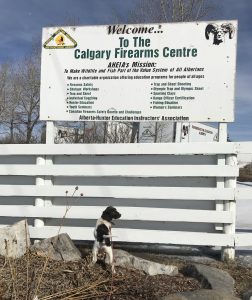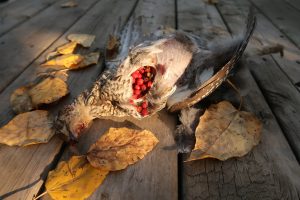 Food, cover, water: the three things hunters look for when figuring out where to find upland birds (and mammals for that matter) on the landscape. Water is probably the easiest to judge with help of maps – do people still use maps? – or satellite imagery. Cover is a little trickier and bird-dependent. Sharptails often congregate in and under mature bush, like buck brush. Sage grouse, not surprisingly, like mature sage bush to hide under. They say pheasant like cattails, though whenever there is also other, less dense cover around, I’ve often found them there. Partridges, due their size, are happy with lower cover. Common theme here is that during the day birds generally don’t sit out in the open, waiting to get picked off by a hawk, so I tend to concentrate on whatever sticks out from the horizontal, whatever breaks up the monotony of the landscape.
Food, cover, water: the three things hunters look for when figuring out where to find upland birds (and mammals for that matter) on the landscape. Water is probably the easiest to judge with help of maps – do people still use maps? – or satellite imagery. Cover is a little trickier and bird-dependent. Sharptails often congregate in and under mature bush, like buck brush. Sage grouse, not surprisingly, like mature sage bush to hide under. They say pheasant like cattails, though whenever there is also other, less dense cover around, I’ve often found them there. Partridges, due their size, are happy with lower cover. Common theme here is that during the day birds generally don’t sit out in the open, waiting to get picked off by a hawk, so I tend to concentrate on whatever sticks out from the horizontal, whatever breaks up the monotony of the landscape.
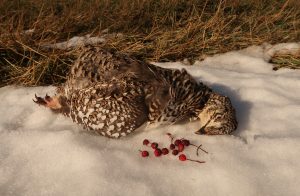
Whenever that cover is near a food source, things can get interesting. What birds eat varies throughout the year, so if you are keen to develop your knowledge on where you might find birds, in addition to just finding and reading this information conveniently on the internet, you could investigate right at the source: the bird’s crop (provided you can shoot the first one). The crop is essentially an enlarged part of the esophagus, where food is stored and digestion is started. It generally sits right above the sternum, and, when full, can easily be felt. You can open it up by inserting a knife just at the top of the sternum, in the V where the breasts meet, and making a slit up towards the throat. Inside is a treasure of information what the birds are eating right now, where you are hunting. This information can help determining where you want to hunt next, or helps you focus on the right kind of cover or habitat.
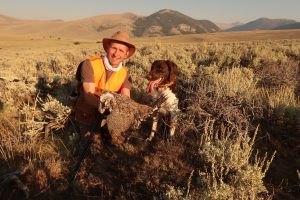
For example, when we hunted sage grouse in September, the assumption was that they would be feeding on grasshoppers. So, we tried to focus on fields with lots of the jittery insects around. And we didn’t find sage grouse. After we killed the first birds, we found fresh greens and white berries in their crops. Since it had been scorching hot and bone dry, fresh greens could only be found near water. Ideally this story would continue by us hunting water courses and finding more birds, but that wasn’t the case. We found them later in the day, in mature sage brush, with not a green leaf in sight. But we might have, based on what we learned. Mid-to-late September ruffed grouse showed kinnikinnick berries and leaves predominantly,
information that went into the knowledge database for later.
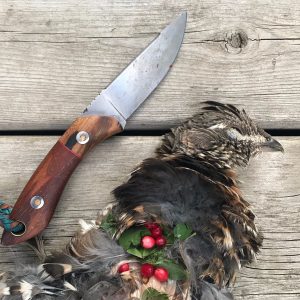
In October, the focus was on sharptails, and they fed on insects (grasshoppers), wild rose hips and unidentified yellowish berries during the warm early weeks, and mostly rose hips towards the end of the season. An island of tall buck brush in the center and rose bushes around it had a good chance of holding some birds.
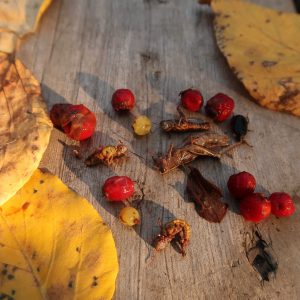
The one blue grouse I shot had nothing but unidentified green leaves in his crop, not very helpful.
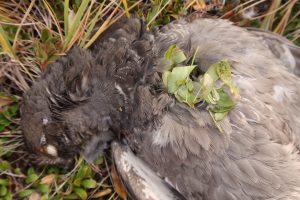
In November, Hungarian partridge didn’t disappoint by confirming that they like to scrounge the stubbles for wheat kernels. But later in the day, they hid in the adjacent coulees to get out of the wind and hide from prying eyes.

The pheasants we shot had empty crops. According to a few biologists I asked, released pheasants don’t really manage to switch to eating wild foods, and the wild pheasants we shot, we found in the afternoon, when the morning feed had already left the crop. The latter is a bold non-scientific assumption, but could be true.
Perhaps checking the crop doesn’t provide immediately helpful information, but over the years, patterns might arise. Maybe some day that will come in handy.

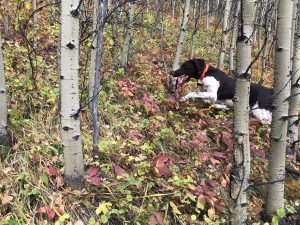
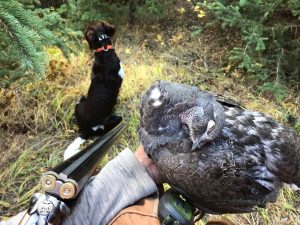
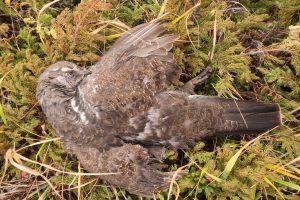
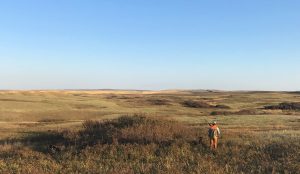
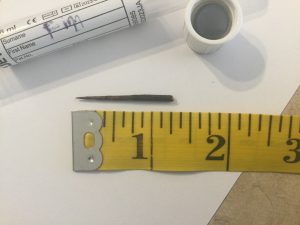
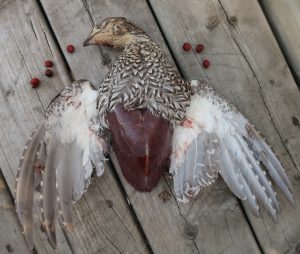
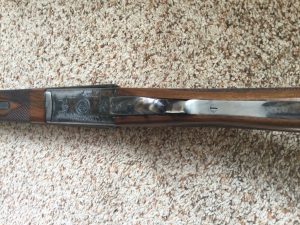
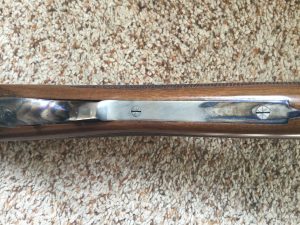 That was not the first issue. After shooting a few rounds of trap on the range, pins started coming loose. The pins that hold the cocking levers, and the one on the forend. As it happened at the end of the first season, I sent it back for a warranty repair. Months later the gun came back, with new pins installed, reportedly. The next range session, it happened again. Instead of sending it back once more, I used some epoxy to set them in place. So far so good. Time will tell.
That was not the first issue. After shooting a few rounds of trap on the range, pins started coming loose. The pins that hold the cocking levers, and the one on the forend. As it happened at the end of the first season, I sent it back for a warranty repair. Months later the gun came back, with new pins installed, reportedly. The next range session, it happened again. Instead of sending it back once more, I used some epoxy to set them in place. So far so good. Time will tell.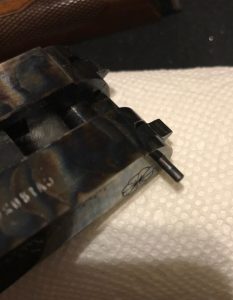 Unfortunately, there is more. The forend has started to wobble. There is side-to-side movement, where there should be none. Easily remedied for now, by putting some electricians tape inside the barrel channels, but in time this may need gunsmith intervention. For just two seasons of fairly light use, that is disappointing.
Unfortunately, there is more. The forend has started to wobble. There is side-to-side movement, where there should be none. Easily remedied for now, by putting some electricians tape inside the barrel channels, but in time this may need gunsmith intervention. For just two seasons of fairly light use, that is disappointing.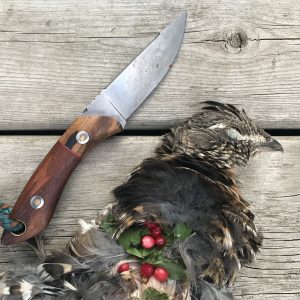
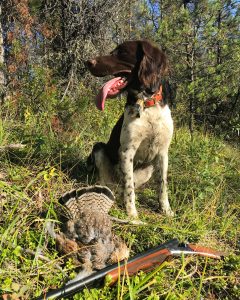
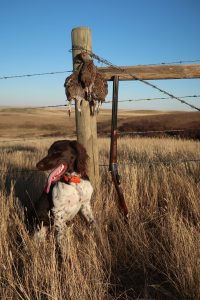
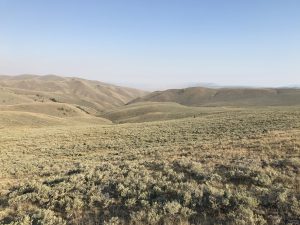
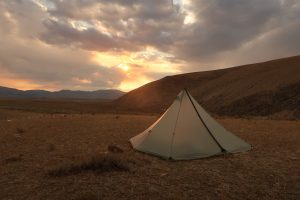
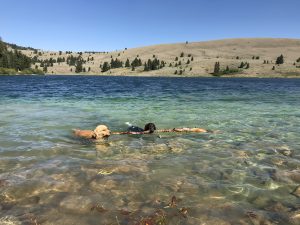 The choice of fields to hunt looked random to me, as for a mile in all directions the terrain was featureless, but it was based on years of experience in this area. I was beginning to pick up small clues about what sage grouse might like. Fresh greens, of which we saw little, grasshoppers, which were ubiquitous, just not in every field. Water perhaps? Some animals get their moisture from plants, but things were pretty arid here. I just imagined birds hitting up water early morning, working their way up to higher areas to catch a breeze, perhaps to return to water late afternoon, before retiring for the night in cover. But that was just speculation.
The choice of fields to hunt looked random to me, as for a mile in all directions the terrain was featureless, but it was based on years of experience in this area. I was beginning to pick up small clues about what sage grouse might like. Fresh greens, of which we saw little, grasshoppers, which were ubiquitous, just not in every field. Water perhaps? Some animals get their moisture from plants, but things were pretty arid here. I just imagined birds hitting up water early morning, working their way up to higher areas to catch a breeze, perhaps to return to water late afternoon, before retiring for the night in cover. But that was just speculation.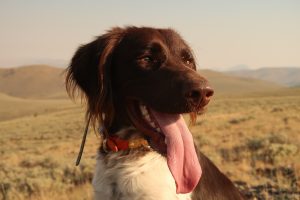
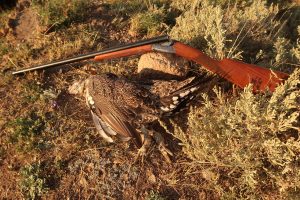 The second morning was mostly a repeat of the first. We hunted a large swath of land, in semi-circular fashion, above a small water source. My friend connected first, missing birds in a covey, but then connecting with the third shot on a single. Finn was bullied out of the retrieve by the other dog, but he got another chance. First a pair of grouse were bumped out of range by my friend’s dog, but not much later I shot a single with the second barrel, as it was rocketing down and around the slope. Finn nicely
The second morning was mostly a repeat of the first. We hunted a large swath of land, in semi-circular fashion, above a small water source. My friend connected first, missing birds in a covey, but then connecting with the third shot on a single. Finn was bullied out of the retrieve by the other dog, but he got another chance. First a pair of grouse were bumped out of range by my friend’s dog, but not much later I shot a single with the second barrel, as it was rocketing down and around the slope. Finn nicely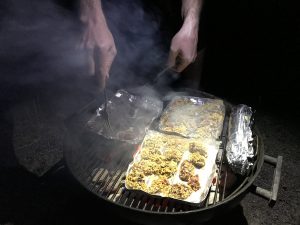 At night, my friend’s son cooked us up a nice meal of cubed, breaded grouse breast, and cutthroat trout. A few cold beers went with that, and life could not have been much better.
At night, my friend’s son cooked us up a nice meal of cubed, breaded grouse breast, and cutthroat trout. A few cold beers went with that, and life could not have been much better.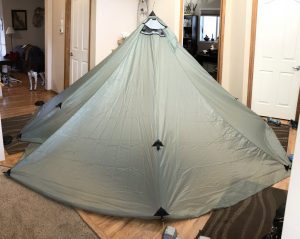
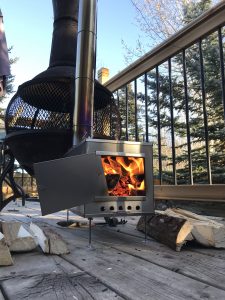
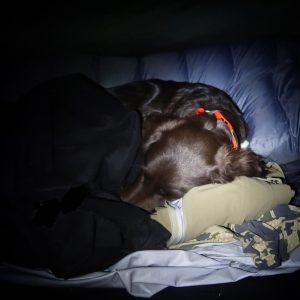
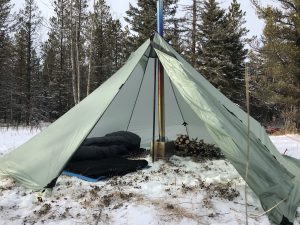
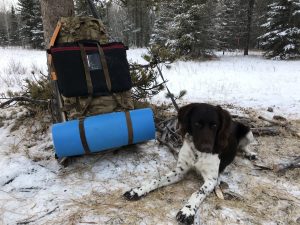
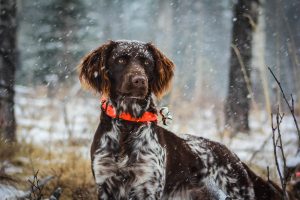 Tanner and Toby are very personable individuals, who make you feel welcome from the get go, and who go to great lengths to show off their dogs and provide you with all the info you need to make a decision on whether a Small Munsterlander is for you.
Tanner and Toby are very personable individuals, who make you feel welcome from the get go, and who go to great lengths to show off their dogs and provide you with all the info you need to make a decision on whether a Small Munsterlander is for you.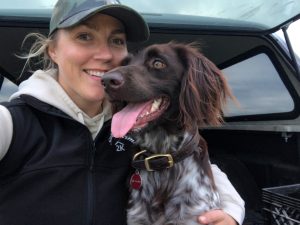
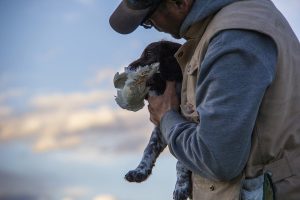 Not being a person that makes decisions on the fly, with a desire to control all parameters that borders on the unhealthy, I struggled a lot through the process of selecting a pup, or rather selecting three. When the sorting was all done, and all the pups had traveled home with their new owners, I asked Tanner and Toby to put some words to paper about the history of their kennel, their breeding program and more specifically how they deal with the process of matching pups to owners.
Not being a person that makes decisions on the fly, with a desire to control all parameters that borders on the unhealthy, I struggled a lot through the process of selecting a pup, or rather selecting three. When the sorting was all done, and all the pups had traveled home with their new owners, I asked Tanner and Toby to put some words to paper about the history of their kennel, their breeding program and more specifically how they deal with the process of matching pups to owners.